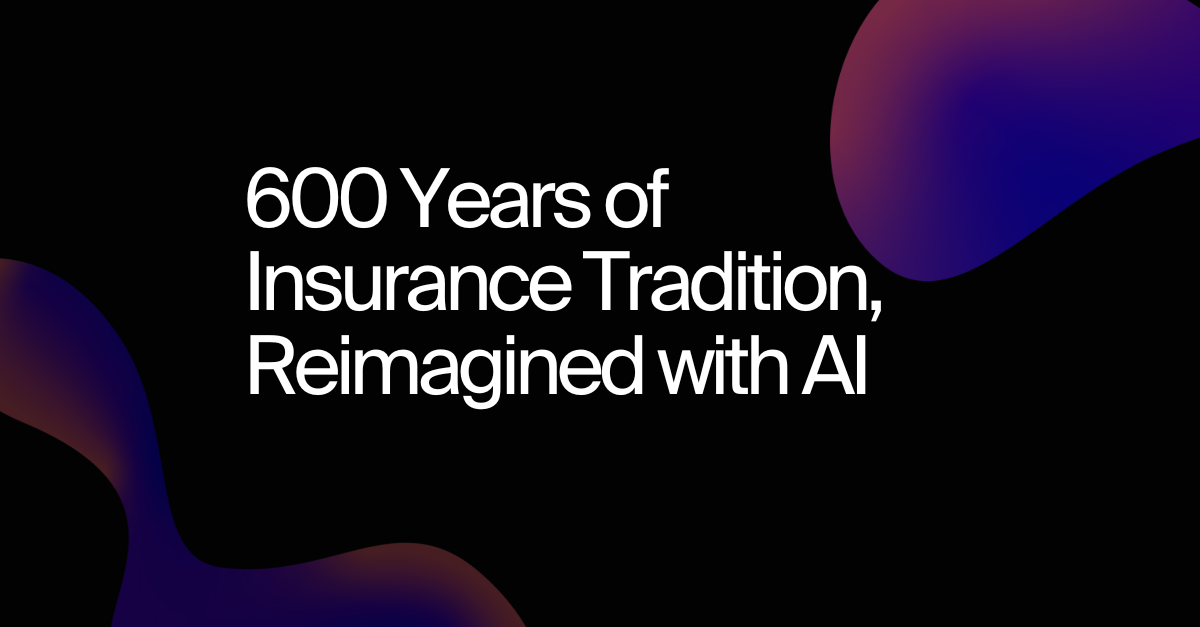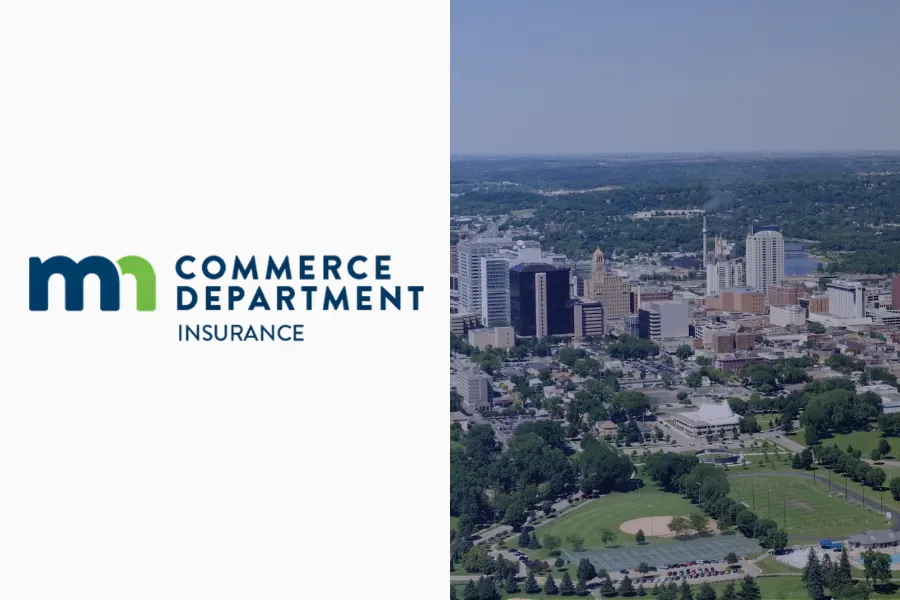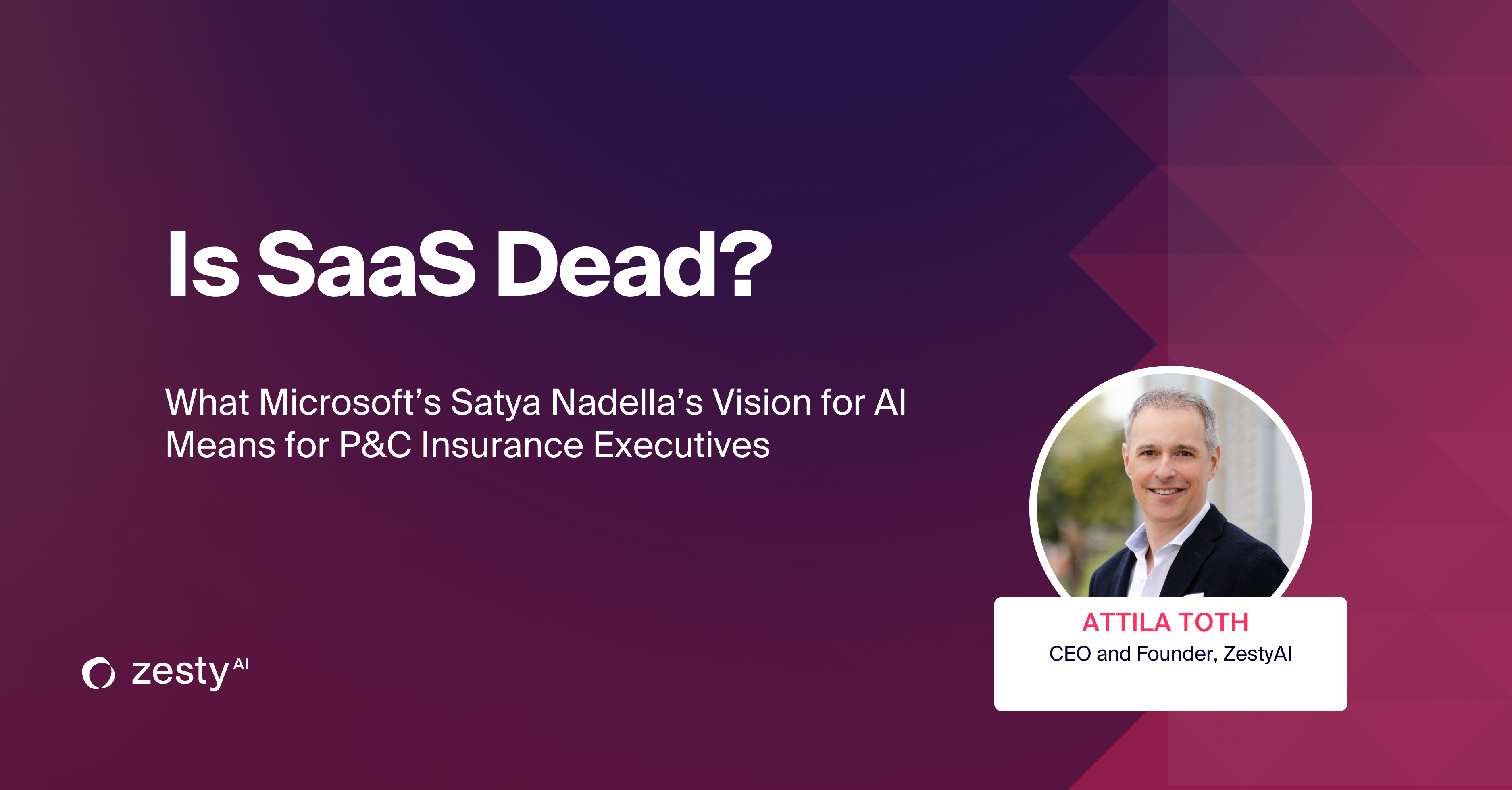Resources

The Truth About Roof Age: 5 Critical Insights Every Insurer Should Know
For insurers, accurate roof age data is essential. Yet, self-reported information often falls short.
Our research shows that 1 in 5 homeowners underreport roof age by an average of 8 years. These discrepancies create hidden risks that can impact underwriting, pricing, and overall portfolio performance.
How can insurers get a more accurate picture?
AI-driven insights provide 97% nationwide coverage, combining verified roof age with real-time condition data for a more comprehensive risk assessment.
Download our latest research for a breakdown of five critical insights that every insurer should know about roof age.
Plus, get access to The Roof Age Advantage, an exclusive video that unveils how AI is setting a new standard for risk evaluation.

Merging Centuries of Expertise with AI for a New Era of Risk Assessment
In 2024, U.S. insured catastrophe losses soared to $113 billion. Learn how we combine centuries of insurance expertise with AI to help insurers navigate an increasingly volatile climate.
The property and casualty (P&C) insurance industry has always been about protecting people and property against the unexpected. But in 2024, U.S. insured catastrophe losses reached $113 billion—nearly double the 25-year average of $58 billion.
For many carriers, the gap between collected premiums and total payouts, including operating costs, continues to widen, underscoring the growing financial strain of climate-driven risks. At ZestyAI, we can’t control the forces of nature, but we’re helping insurers adapt.
From Franklin’s Fire Policies to AI-Powered Resilience
The concept of insurance dates back to the Middle Ages, when merchants sought protection from unpredictable events like storms and piracy. Over time, the practice evolved into today’s property and casualty insurance, safeguarding homes, businesses, and communities.
In the United States, Benjamin Franklin advanced the industry by founding the nation’s first fire insurance company in 1752. By refusing to insure fire-prone buildings, his company not only mitigated risk but also set new safety standards. This principle of risk reduction has guided the industry ever since.
Today, ZestyAI is building on that foundation with AI-driven risk models that help insurers address modern challenges. While the tools have changed, the mission remains the same: to protect people, property, and the future.
Modern Tools for Today’s Challenges
At ZestyAI, we’re helping insurers address modern challenges with solutions designed to fit seamlessly into their workflows. Our AI-driven platform combines high-resolution aerial imagery, proprietary data, and advanced modeling to provide a clearer, more reliable view of risk.
Unlike broad, traditional approaches, we focus on delivering actionable insights at the property level, helping insurers:
- Modernize outdated processes without overhauling their systems,
- Improve underwriting precision,
- Optimize inspections and resources, and
- Strengthen their portfolios.
A key example of this is our work in wildfire risk modeling. ZestyAI’s proprietary wildfire loss database—built using data from 1,500 events over the last 20 years—helps insurers predict property-specific risks with precision. By understanding wildfire risk at this granular level, insurers can proactively reduce losses, guide mitigation strategies, and protect their customers with greater confidence.
Discover how ZestyAI’s regulator-approved solutions set new standards for accuracy, compliance, and fairness in insurance.

ZestyAI Models Approved to Transform Storm Risk Analysis in Minnesota
Regulatory approval for property specific insights will help insurers tackle severe convective storm risks after three billion-dollar weather events in Minnesota in 2024
ZestyAI, the leading provider of AI-powered property and risk analytics, today announced that its Severe Convective Storm suite, including Z-HAIL™, Z-WIND™, and Z-STORM™, has received regulatory approval from the Minnesota Department of Commerce.
This milestone supports Minnesota insurers in improving storm risk assessment, enhancing underwriting precision, and supporting proactive risk management strategies.
Minnesota has seen significant losses from severe convective storms. According to data from NOAA’s National Centers for Environmental Information (NCEI), the state experienced three billion-dollar weather events in 2024 alone, with hail and wind causing extensive damage. A July storm in the Twin Cities resulted in more than $1.8 billion in insured losses, highlighting the need for innovative solutions to manage storm-related risks.
ZestyAI’s Severe Convective Storm suite delivers property-specific risk insights by combining climatology analysis with granular property data. Built on extensive loss data and validated by regulatory authorities, the suite equips insurers to assess and address storm risks with a higher level of accuracy and confidence. Key features include:
- Z-HAIL: Evaluates each roof’s unique characteristics, including accumulated damage, to predict which properties are likely to file a claim, even in the same neighborhood.
- Z-WIND: Uses AI-generated 3D analysis revealing pivotal insights about roof condition, complexity, and potential points of failure.
- Z-STORM: Predicts the frequency and severity of storm damage claims, examining the interaction between climatology and the unique characteristics of every structure and roof
These models allow insurers to move beyond reactive damage assessments, helping them identify high-risk properties, allocate resources effectively, and support policyholders in reducing risks.
Bryan Rehor, Director of Regulatory Affairs at ZestyAI said:
“Minnesota’s exposure to hail and wind damage underscores the importance of property-specific insights. With this approval, insurers can access validated models to deliver precise underwriting and rating decisions and encourage risk-reduction measures among policyholders.”
This approval builds on a series of regulatory endorsements in key wind and hail-prone states across the Great Plains, Midwest, and U.S. South, including Texas, Colorado, Indiana, Missouri, and Iowa, among others.

Elevating Insurance Risk Models: How ZestyAI Powers Smarter Data-Driven Decisions
ZestyAI delivers predictive insights and refined risk profiles to help you stay ahead in an increasingly competitive market.
National insurance carriers have long relied on sophisticated models to drive underwriting accuracy and profitability.
But even the most advanced systems can benefit from fresher, more granular, and unique data inputs.
That’s where ZestyAI comes in. With 97%+ U.S. property coverage and exclusive data points—like roof condition and building permits—ZestyAI provides national carriers with the data needed to supercharge their existing models and achieve unparalleled accuracy in risk assessment.
Every insurance model thrives or falters based on the quality of its inputs. Using computer vision and AI-powered insights, ZestyAI captures property-specific features with unmatched precision and is updated multiple times annually. This allows carriers to access insights they’ve never had before, including:
- Roof Condition and Complexity: ZestyAI’s 3D analysis evaluates every facet, penetration, and angle of a roof, providing a complete view that powers complex rating models.
- Parcel-Level Features: Detailed property-level data, such as driveway condition, building permits, lot debris, and overhanging vegetation, reveal nuanced risks for underwriting.
Climate, Geography, and Infrastructure Variables: Comprehensive data encompassing topography, slope, climate factors, and critical infrastructure.
Why National Carriers Choose ZestyAI as a Data Partner
Adopting an off-the-shelf solution isn’t always the right fit for national carriers with robust internal modeling teams. Instead, these insurers benefit from ZestyAI’s ability to integrate powerful datasets into their existing infrastructure seamlessly. Key advantages include:
- Data Uniqueness: Proprietary insights like property updates and nuanced parcel-level conditions unavailable from public or conventional sources.
- Broad and Deep Coverage: 97%+ U.S. property coverage ensures nationwide relevance.
- Change Detection and Data Recency: AI-driven updates keep your models ahead of evolving risks with near-real-time insights.
By integrating ZestyAI’s data, carriers can complement their models and ensure their outputs are informed by the latest, most comprehensive property-level information.
Driving Precision with a Science-Driven Approach
At ZestyAI, science and a hypothesis-driven approach form the foundation of our offerings. Hundreds of variables are tested for each model, carefully selected and validated to ensure they meet both logical and causal standards—not just correlations. This rigorous methodology ensures compliance with regulatory scrutiny and real-world risk prediction.
Immediate Benefits, Long-Term Value
- Enhanced Model Accuracy: ZestyAI’s data serves as a diagnostic lens, revealing what’s missing in your existing frameworks and sharpening predictions.
- Operational Efficiency: Recent upgrades to ZestyAI’s API infrastructure, including a 50% reduction in response times and a 10x increase in data processing power, ensure carriers can seamlessly integrate real-time insights into their workflows. These enhancements enable faster decision-making and improved scalability, helping insurers stay ahead in an evolving risk landscape.
- Regulatory Readiness: Transparent, explainable data sources ensure compliance with even the most stringent underwriting regulations.

THORE Insurance Taps ZestyAI to Power Texas Growth
ZestyAI, the leader in AI-powered property and climate risk analytics, today announced a partnership with THORE Insurance, a Texas-based company.
Johnathan Yazdani, President and CEO of THORE Insurance, said:
"After evaluating several options, ZestyAI was the clear choice for our underwriting needs. Far too often, our industry suffers preventable, foreseeable losses and chalks it up to a cost of doing business. No more. Zesty's comprehensive property insights and roof age solution stood out, offering the precision and scalability we need to grow our business in Texas year over year and maintain low prices for our members through underwriting excellence."
"Their data-driven insights and depth of 40+ property features made the decision easy for us, and we’re confident ZestyAI will be a key partner as we build for the future."
ZestyAI’s Roof Age insights, derived from building permits, aerial imagery, and advanced AI analysis, provide 97% data coverage across the U.S., addressing inaccuracies in self-reported roof data.
Recent research shows that 15% of roofs are at least eight years older than reported, highlighting the need for reliable, data-driven solutions.
The Digital Roof™platform uses AI-generated 3D analysis to assess roof attributes like condition, complexity, and potential failure points, while Z-PROPERTY™ Location Insights identifies property features such as vegetation overhang, swimming pools, and solar panels. Together, these capabilities deliver deeper insights to refine risk assessment and pricing.
“In addition to their appetite for innovation, THORE’s leadership clearly communicated a vision to serve Texas homeowners with fairly-priced, best-in-class insurance products,” said Sebastian Kasza, Director of Strategy and Business Development at ZestyAI.
Leveraging AI-powered, property-specific insights in underwriting and pricing is the best way that a carrier can achieve that ambition sustainably.
We are thrilled to partner with Jonathan and his team as they serve the Texas insurance market.”

Is SaaS Dead?
What Microsoft's Satya Nadella’s Vision for AI Means for P&C Insurance Executives
By Attila Toth, Founder and CEO, ZestyAI
“SaaS is dead.”
With these three words, Microsoft CEO Satya Nadella sparked a global debate, challenging the foundation of enterprise operations. His prediction? AI agents will soon replace traditional SaaS workflows, moving business logic to a dynamic AI layer and leaving legacy tools behind.
For property and casualty (P&C) insurers, this prediction is more than a tech trend—it’s a wake-up call. Carriers have invested heavily in SaaS platforms to modernize underwriting, claims, and risk management. But with AI agents poised to dominate, are these investments like castles built in the sand, vulnerable to the rising tide of AI?
Let’s unpack what Nadella’s claim means for P&C insurers and explore how to prepare for a future where agentic workflows reshape this $2.6 trillion global industry.
From Static Systems to Agentic Workflows
Over the past decade, P&C carriers have focused on modernizing their technology stacks, moving
to SaaS-based systems for policy management including underwriting, claims, and billing. These platforms promise efficiency gains, streamlined workflows, and improved business intelligence. Yet Nadella’s vision points to a future where AI agents bypass these systems altogether, directly interact- ing with data to execute tasks dynamically.
Enter agentic workflows.
Agentic workflows are powered by AI agents—autonomous systems that can analyze data, make decisions, and execute tasks in real-time without rigid reliance on predefined rules or interfaces. Unlike traditional workflows that depend on user interaction, agentic workflows dynamically adapt to the situation, accessing real-time data and leveraging advanced decision models to solve problems creatively.
Let’s Break it Down With Examples:
- Underwriting: Traditionally, underwriters rely on policy management systems to assess risk, manually inputting and analyzing data. In an agentic workflow, an AI agent pulls data from internal and external sources, such as property imagery or weather patterns, and evaluates risk in real time, and proposes pricing autonomously.
- Claims: Instead of adjusters triaging claims by reviewing data and making decisions step by step, AI agents analyze First Notice of Loss (FNOL) data, cross-reference it with historical patterns, flag potential fraud, and recommend payouts or next steps—all in seconds.
Think of agentic workflows as moving from a ‘static map’ to a ‘smart GPS.’ Traditional SaaS systems provide fixed routes, like a printed map or a AAA TripTik, where users must plan and follow a predefined path. In contrast, AI agents function like a GPS that dynamically adjusts to roadblocks or detours, guiding you in real-time to reach your destination more efficiently.
This doesn’t eliminate the roles of underwriters or adjusters—it amplifies them. With agentic workflows, professionals transition from being data processors to strategic decision-makers, supported by AI agents that execute repetitive and analytical tasks.
The question is not if, but how fast this shift will occur. In P&C, where SaaS investments are relatively new, the transition may take time. But the direction is unmistakable, and forward-thinking executives should prepare now.
How Insurance Leaders Can Prepare for the AI Era
The shift to AI-driven workflows brings both challenges and opportunities. To stay ahead, insurance leaders must act now. Here’s how:
1. Build AI-First Architectures
Insurers must prioritize modular, API-driven platforms that enable seamless integration with AI agents. An AI-first architecture treats applications as interchangeable layers rather than static end- points, ensuring adaptability to future innovations without extensive system overhauls.
2. Unify Siloed Data
AI agents thrive on data, yet fragmented, siloed data remains a significant challenge for insurers. It’s not about choosing the “right” database—AI agents can interact with any data store. What matters is creating a unified and federated data structure that breaks down silos and provides AI agents with a cohesive view of organizational information.
CIOs should prioritize data integration, ensuring underwriting, claims, customer, and risk data are accessible across the enterprise. A federated approach bypasses the need for lengthy consolidation projects while enabling AI-driven insights.
3. Engage Regulators Early
AI workflows will only succeed if regulators are on board. Departments of Insurance (DOIs) need to trust the decision-making processes of AI agents and ensure they meet standards for transparency, fairness, and compliance.
At ZestyAI, we’ve worked with state Departments of Insurance across the U.S. to gain approval for our AI models. Building trust with regulators requires proactive engagement, clear communication, and ongoing education. Insurers that lead in this area will not only gain competitive advantages but also shape the regulatory frameworks that govern the use of AI.
4. Pilot Agentic Workflows
Start small, but start now. Deploy AI agents in low-risk areas like claims triage or fraud detection. Early pilots provide valuable lessons and build organizational confidence in agentic workflows.
5. Expand ROI Thinking
AI agents are poised to fundamentally transform operations, requiring a broader perspective on ROI. Beyond traditional metrics like cost reduction or workflow efficiency, consider strategic gains such as:
- Faster speed to market.
- Improved customer satisfaction. - Enhanced risk segmentation.
6. Put Technology Partners to the Test
Carriers should evaluate their SaaS providers on their readiness to transition to agentic workflows. Ask pointed questions: What is their AI strategy? How do they plan to integrate AI agents into their products? - Are they prepared to support modular, dynamic workflows?
The Bottom Line
The future Nadella outlines—a world driven by AI agents—is as disruptive as it is exciting. For P&C insurance executives, it’s a call to action: the technology stack of today may not meet the demands of tomorrow. Preparing now by investing in AI-first architectures, building unified data structures, and engaging with regulators will position insurers to thrive in this new era.
SaaS isn’t dead yet, but the writing is on the wall. The question is, are you ready to embrace the future? Are you building a castle ready to weather the waves?
Ready to see how ZestyAI works on your book of business?
Tell us a little about your needs. We'll show you how we reduce losses and help you price with precision.








